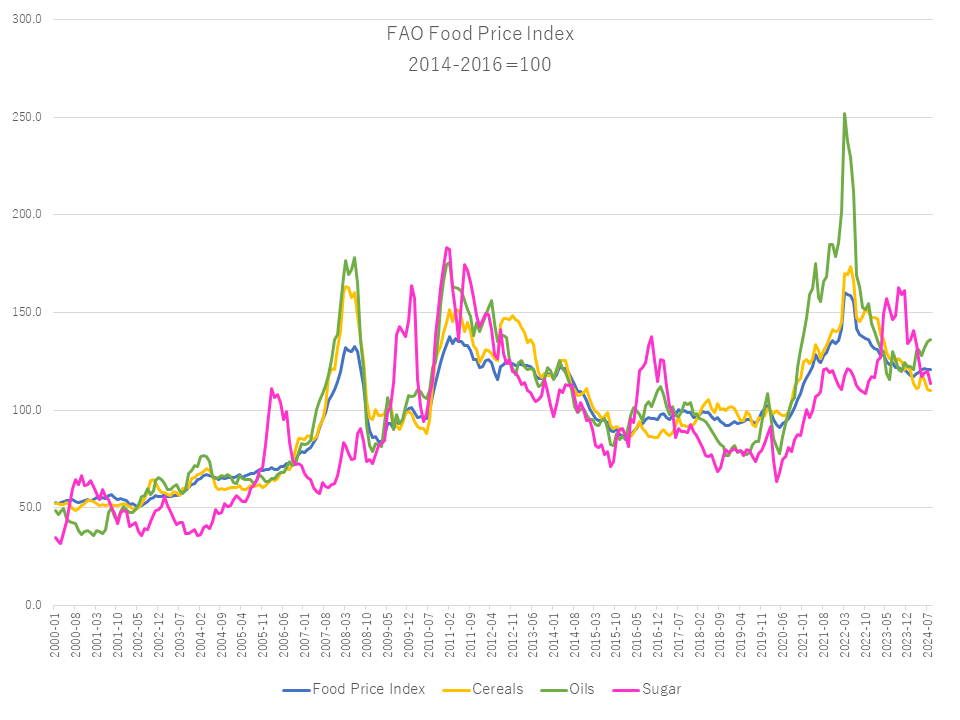Pick Up
1095. Global Food Price Trends for August 2024

1095. Global Food Price Trends for August 2024
The Food and Agriculture Organization of the United Nations (FAO) released its global food price trends on September 6. The average value in August 2024 was 120.7 points, a slight decline from the previous month as the decline in the sugar, meat and grain price index outpaced the increase in vegetable oil and dairy prices. This was 1.1% lower than the previous year and 24.7% lower than the historic high of 160.3 points in March 2022.
The grain price index fell 0.5% month-on-month and 11.9% year-on-year to 110.1 points in August. Global wheat export prices fell due to cooling international demand and competition among exporting countries, especially competitive prices from countries in the Black Sea region. Better-than-expected harvests in Argentina and the U.S. also contributed to the softening of prices. In contrast, global maize prices rose on concerns about the impact of heatwaves in the European Union and parts of the United States, as well as weaker-than-expected supply in Ukraine. The rice price index rose 0.6% in August, reflecting higher prices in response to seasonal tight demand for Indica rice and a rise in the value of the currency against the U.S. dollar in several exporting countries.
The vegetable oil price indicator rose 0.8% month-on-month, the highest since January 2023. Behind the slight increase from the previous month is the decline in soybean, sunflower, and rapeseed price indicators in response to the rise in palm oil prices. This is the third consecutive month of increases in international palm oil prices, reflecting a seasonal improvement in Indonesian production that remains below asset capacity. Conversely, soybean prices have declined in response to the prospect of a good harvest in 2024-25.
The sugar price index fell 4.7% month-on-month and 23.2% year-on-year, the lowest since October 2022. The decline in August was driven by an improved outlook for production in 2024-25 due to rainfall in Thailand and India that was suitable for sugarcane production. In addition, the decline in international crude oil prices also put downward pressure on sugarcane prices. On the other hand, at the end of August, global sugar prices temporarily soared due to concerns about the impact of wildfires in sugarcane fields in Brazil's main production areas and lower than expected yields, curbing the overall downward trend in prices.
Contributor: IIYAMA Miyuki (Information Program)
